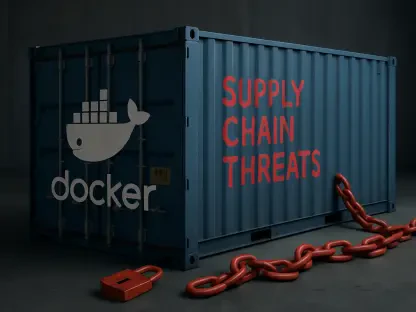What happens when the relentless demand for AI power collides with the staggering costs and complexity of high-performance computing? Enterprises across industries, from finance to media, grapple with this challenge daily, often sidelined by limited access to GPU resources. IBM’s bold entry into serverless GPU computing with Serverless Fleets offers a tantalizing solution, promising to reshape how businesses harness artificial intelligence and simulation capabilities without the crushing burden of infrastructure. This innovation isn’t just a technical update—it’s a potential lifeline for companies striving to stay competitive in a data-driven era.
Why IBM’s Innovation Captivates the Tech World
At the heart of this development lies a pressing reality: the barrier to scaling AI isn’t always expertise, but access to raw computing power. IBM’s Serverless Fleets, integrated into the Cloud Code Engine, aim to dismantle these obstacles by delivering GPU-intensive computing on demand. This approach could redefine operational models for businesses that previously couldn’t justify the expense of dedicated hardware, opening doors to advanced AI applications and complex simulations.
The significance of this shift cannot be overstated. With industries racing to adopt generative AI and real-time analytics, the ability to tap into high-performance resources without long-term commitments marks a turning point. Smaller enterprises, often outpaced by tech giants, might now find a foothold to innovate, while larger firms could streamline bloated infrastructure costs. This sparks curiosity about how far-reaching the impact might be in leveling the competitive landscape.
The Surging Demand for GPU Power in Enterprise AI
Modern AI models, with their intricate architectures, devour computational resources at an unprecedented rate. Tasks like training neural networks or running risk simulations in finance require immense GPU power, yet many organizations struggle with skyrocketing costs and the logistical nightmare of managing such workloads. The gap between need and accessibility has widened, leaving countless businesses searching for cost-effective alternatives.
IBM’s serverless GPU model emerges against this backdrop of urgency. Industry trends show a clear pivot toward flexible cloud solutions, with a recent report estimating that over 60% of enterprises plan to adopt elastic computing models by 2027, starting from 2025. This reflects a broader push to democratize high-performance computing, ensuring that even mid-sized players can leverage AI without the prohibitive overhead of traditional setups.
Inside IBM’s Serverless Fleets: A Game-Changing Approach
Delving into the mechanics, IBM’s Serverless Fleets reframe how GPU-intensive tasks are managed within the Cloud Code Engine. Enterprises can submit massive compute jobs through a single endpoint, and the system takes over—automatically provisioning GPU-backed virtual machines, executing tasks, and scaling down resources post-completion. This hands-off process eliminates the grunt work of manual configuration, a persistent pain point for IT teams.
Cost efficiency stands out as a key advantage. With a pay-as-you-go structure, companies pay solely for active runtime, a stark contrast to the fixed expenses of dedicated GPU clusters. Consider a media firm rendering high-definition content: instead of leasing hardware for months, it can process projects on demand, potentially cutting costs by up to 25%, as suggested by early cloud adoption metrics.
Scalability further enhances the appeal. Whether it’s a financial institution accelerating risk modeling or a tech startup experimenting with generative AI, the platform dynamically adjusts resources to match workload spikes. This adaptability positions IBM alongside hyperscalers like AWS and Azure, though its unified environment for web apps, functions, and batch jobs offers a distinctive edge in operational simplicity.
Voices from the Industry: Weighing the Impact
Feedback from the field paints a nuanced picture of IBM’s innovation. The company asserts that Serverless Fleets can manage sprawling workloads with minimal Site Reliability Engineering staff, a claim supported by its auto-scaling capabilities. Industry analysts corroborate this potential, projecting infrastructure cost reductions of up to 30% for specific AI tasks, based on recent studies of serverless adoption.
Yet, not all reactions are unreservedly positive. A CIO from a leading financial services firm remarked, “Spinning up simulations without weeks of server provisioning is transformative, but the risk of unchecked costs in a serverless model keeps us cautious.” This blend of enthusiasm and wariness underscores a critical need for transparency and control as enterprises navigate uncharted waters with such platforms.
Additional insights reveal a competitive undercurrent. While IBM’s offering garners attention for its streamlined integration, alternatives from other cloud giants remain formidable. Decision-makers are advised to scrutinize performance benchmarks and user experiences, as the right fit often hinges on specific workload demands and long-term strategic goals.
Strategic Moves for Adopting IBM’s GPU Solution
For enterprises considering this technology, a methodical approach is essential to balance innovation with fiscal responsibility. Start with a thorough cost analysis, comparing on-demand GPU pricing against reserved capacity options. Implementing real-time monitoring tools can prevent budget overruns, a frequent concern in serverless environments where usage can spike unexpectedly.
Next, assess workload compatibility by piloting smaller projects to gauge scalability and performance. Not all tasks, such as continuous AI training versus sporadic rendering, align perfectly with a serverless model. Simultaneously, prioritize security and compliance, ensuring that data governance policies withstand the shift to a managed cloud setting, especially for regulated industries like healthcare or finance.
Finally, benchmark IBM’s solution against competitors like AWS Fargate or Azure Serverless Container Apps to pinpoint the optimal choice. Factor in long-term operational expenses and staff training needs, establishing a feedback mechanism to refine usage over time. This structured evaluation empowers leaders to harness the benefits of serverless GPU computing while mitigating inherent risks.
Reflecting on a Transformative Leap
Looking back, IBM’s introduction of Serverless Fleets marked a pivotal moment in the quest to democratize high-performance computing for enterprise AI. The fusion of scalability, cost efficiency, and reduced operational friction offered a compelling alternative for industries burdened by traditional infrastructure. It provided a glimpse into a landscape where access to GPU power no longer dictated competitive success.
As enterprises reflected on this shift, the path forward became clear: meticulous planning and robust oversight were non-negotiable. Comparing costs, fortifying security measures, and tailoring workload strategies emerged as critical next steps. Beyond immediate adoption, the broader challenge lay in anticipating how such innovations would evolve, urging businesses to stay agile and informed in a rapidly changing technological arena.









